It’s no secret that onboarding and service delivery can make or break long-term client relationships. A carefully crafted client journey doesn’t just improve satisfaction and trust — it also gives you the flexibility to navigate challenges without losing control or confidence.
In a recent Rocketlane webinar, Brett Jarvis, VP of Customer Success and CX at Rocketlane, and Kasey Smith, Director of Operations and CX at Graphite Connect got together to share their expert tips and real-world experiences on how to elevate client onboarding and service delivery to drive lasting success.
Brett brings over two decades of SaaS leadership experience, having defined the Customer Success Manager role at Oracle and spearheaded post-sales transformations at Salesforce and LinkedIn. His expertise in developing high-margin services and scaling customer success initiatives for major SaaS companies now fuels Rocketlane's rapid growth.
Kasey leads operations at Graphite, where he oversees customer success, implementations, and support services. With a rich background in entrepreneurship and global sourcing, Kasey is dedicated to helping enterprises optimize supplier onboarding and data management through Graphite, a platform designed to function like a LinkedIn network for suppliers.
In this post, we'll explore the key takeaways and actionable insights from their session, equipping you with practical strategies to enhance your business practices.
Customer experience as a key differentiator in B2B
Think about what makes your favorite restaurant your favorite. It’s not just the delicious food—though that's a significant part of it. It's the entire experience: effortless reservations, staff who remember your favorite table, recommendations that hit the mark, and maybe even a complimentary dessert now and then. It’s these thoughtful touches that keep you coming back.
It’s the same with your B2B customers. A great product or service isn't enough on its own. The experience you provide to your clients must be intentional and outcome-focused to create a meaningful impact.
Clients will always prioritize results. However, if you can make the journey toward those outcomes feel smooth, personalized, and intentional, you’ll not only foster loyalty but may also deepen your relationship. It’s a win-win: they achieve their goals, while you build trust and long-term partnerships.
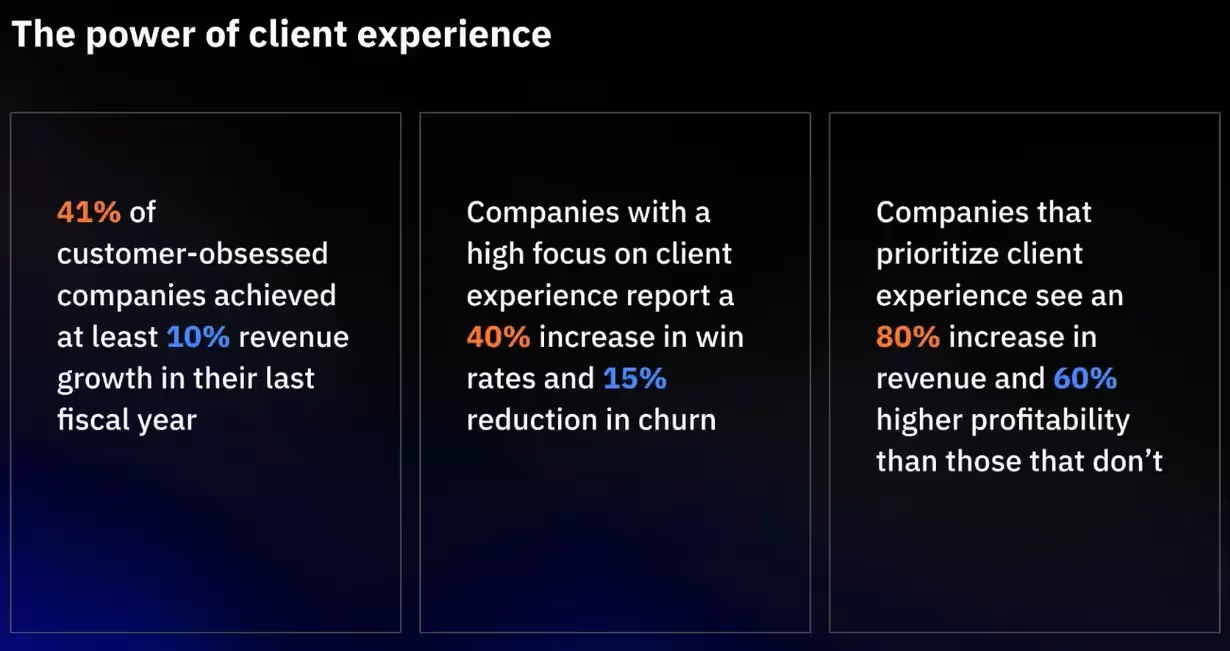
The key is to be intentional with every customer touchpoint, understanding their needs deeply, and providing value every step of the way.
How Graphite’s focus on enhanced CX transformed their implementations
About two years ago, Graphite was still finding its footing in the implementation process. They approached new projects with a blank slate, allowing customers to define their own vision for implementation. While this gave plenty of room for creativity, things got chaotic and harder to manage.
The team realized the importance of a smoother, more intentional customer experience. They began refining their process, making it not just about getting clients live quickly, but about making sure they had a positive journey from start to finish.
One of the key steps was bringing in Rocketlane, which helped them simplify and streamline their implementation process.
The focus on experience led to some surprising results.
They saw a 60% increase in gross margins tied to implementations, simply by ensuring the process was more structured and customer-focused. Interestingly, the team's earlier belief that a blank canvas offered a “white glove” experience turned out to be misguided. It was clear that customers appreciate having structured guidance and clear expectations. Today, they prefer Graphite to provide a framework that not only streamlines the process but also holds them accountable for their part.
10 ways to amplify experience across customer touchpoints
To truly enhance the customer experience during the implementation process, you need to focus on three core areas: intensity, clarity, and speed.
Intensity isn’t about being pushy; it’s about arriving well-prepared and maintaining a sharp focus on expectations and accountability. Clarity is about demonstrating professionalism and expertise at crucial moments, while a focus on speed is about ensuring that value is delivered promptly, with timely support throughout the journey.
Here are ten actionable steps that Brett and Kasey recommend for weaving these three aspects into your customer onboarding and service delivery processes:
1. Bulletproof your handoffs
Kasey and Brett highlight the importance of intensity at every stage to drive accountability. Sales, implementation, and customer success must work hand-in-hand to ensure seamless handoffs. It’s about creating a culture of accountability, both within your internal team and the external customer organization. This intensity is crucial, particularly during the sales-to-service handoff.
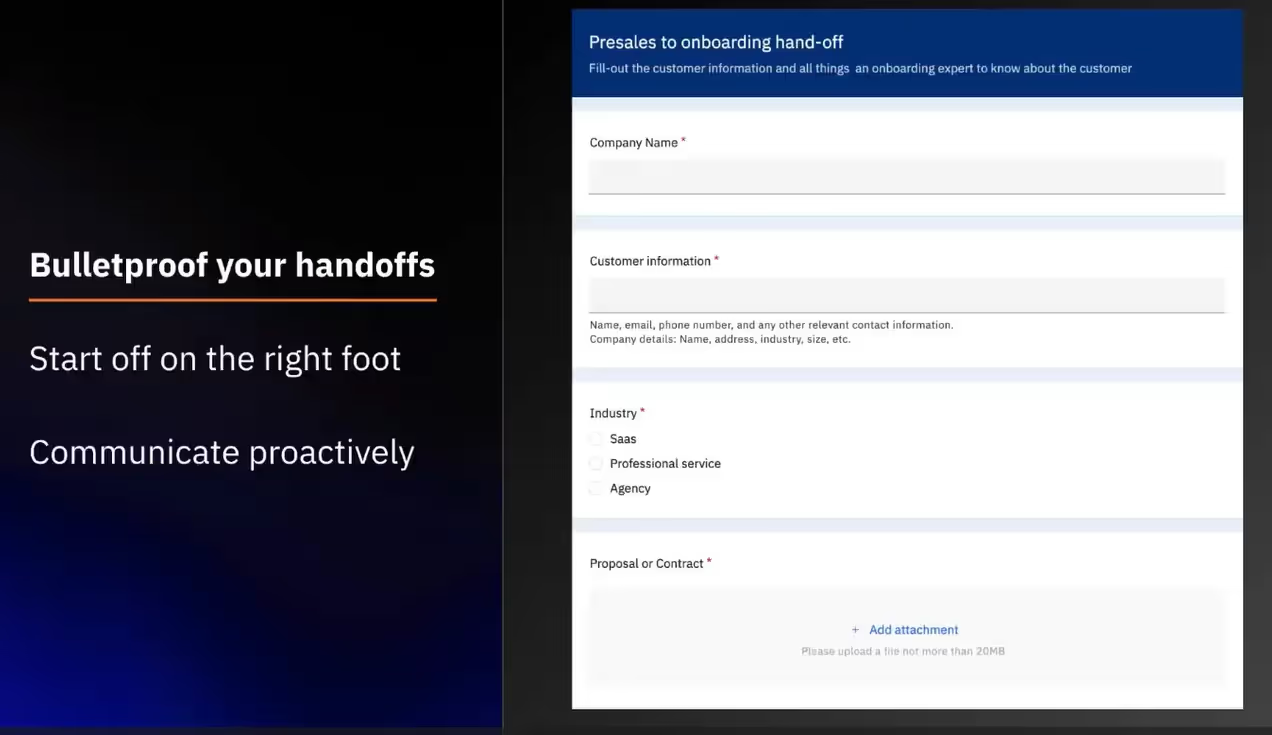
2. Start off on the right foot
It’s your responsibility to project manage effectively from the start. A well-executed kickoff meeting signals professionalism and assures customers that the project is in capable hands.
In addition, all too often, the people managing the product's implementation weren’t involved in the sales cycle, so it's essential to start with a clear understanding. "We set the tone by involving high-level stakeholders—such as the CFO, CPO, or CTO—early in the process, even though they may not be involved in weekly updates. This way, expectations are clear and we maintain a level of accountability on both sides," Kasey explains.
Setting clear expectations during the kickoff phases helps involve these leaders in weekly status updates, creating a sense of intensity around the project.
3. Communicate proactively
Effective proactive communication is another key aspect of a well-orchestrated customer success strategy. A good way to ensure proactive communication is to ensure that you share weekly status not just with day-to-day contacts but also with senior leadership within the customer organization.
Tools like Rocketlane enable senior stakeholders to identify blockers and understand what’s
happening. This transparency avoids a situation where project managers are the only ones relaying issues. This goes a long way in ensuring that the relationship isn’t adversarial, but more of a partnership, with each partner holding up their end of the deal.
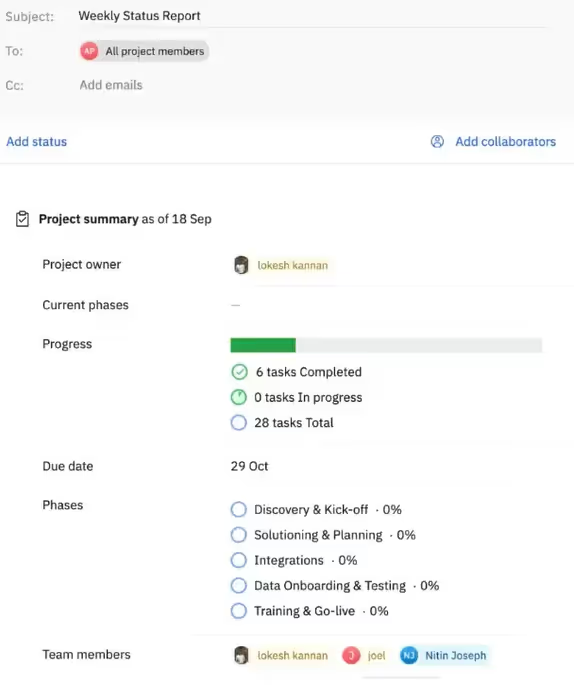
When you use status reports, ensure that they are more than routine updates—they should provide transparency into potential blockers and challenges, giving the customer’s leadership an accurate view of the project’s progress. Sharing the full picture, even when things aren’t going smoothly, helps build trust and prevents any surprises later.
4. Templatize everything
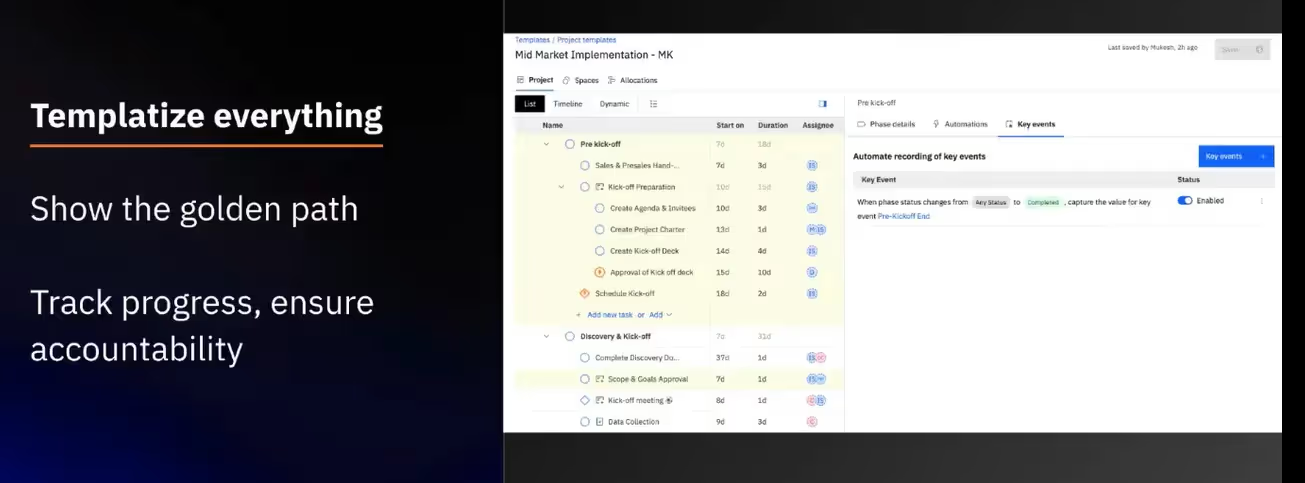
Brett shares that many of Rocketlane's successful customers identify templatisation as the most critical factor in their achievements. By leveraging tools like Rocketlane, they create a structured and orderly approach to their processes, which served as a forcing function for their implementation strategies.
Graphite’s initial implementation process had a heavy reliance on seasoned implementation managers, which often resulted in prolonged timelines and increased costs. After adopting Rocketlane’s templatization capabilities, the team was able to break down the implementation into granular steps, the team made the process accessible even to those with limited product knowledge. The key was ensuring adherence to established recommendations and best practices – instead of exploring complex customer-specific requirements.
As a result, even Kasey, in his early days, with minimal experience, was able to lead a series of meetings for a small customer and successfully go live after just five meetings—an achievement that typically required 50 to 70 meetings.
This shift not only saved time and resources but also opened the door for Graphite to consider offering quicker implementations to smaller customers,
5. Show the golden path
By providing clear visibility into your plans, you instill confidence in your clients and prevent any surprises later on. This way, they won’t say, “Wait a second, I thought we were going to do this” midway through the journey.
Clearly outline your approach, and if any adjustments are necessary, address them upfront.
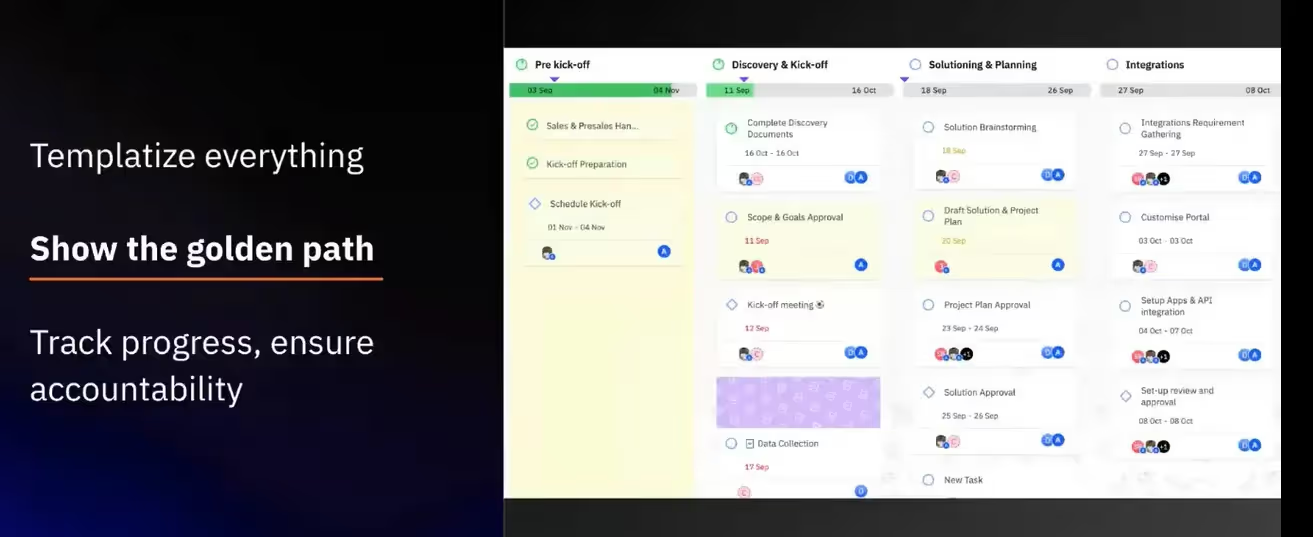
6. Track progress to ensure accountability
This approach ensures that all team members, including senior leaders, are kept informed through status updates. By allowing both internal and external leadership to track blockers and project progress via tools like Rocketlane, the process becomes transparent, reducing any misunderstandings or project slowdowns.
To effectively track progress and ensure accountability, start by establishing clear, measurable goals at the outset to guide your assessment. Be prepared to make adjustments based on feedback or changes in circumstances, addressing any modifications promptly to maintain alignment.
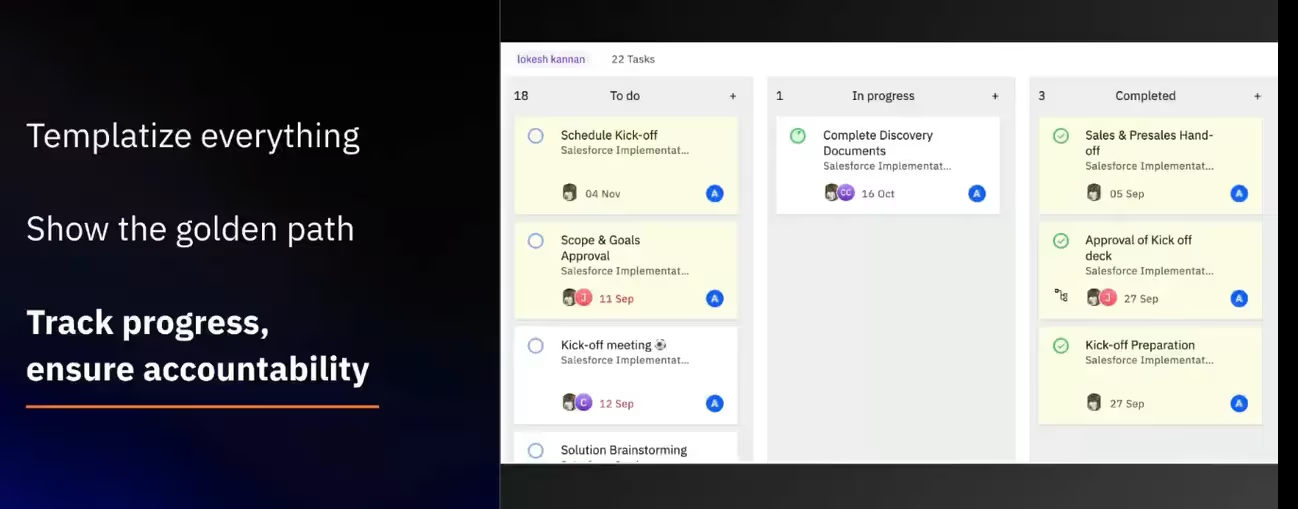
7. Deliver early wins
Delivering early wins is crucial in establishing momentum and demonstrating value to your customers.
Begin by agreeing on initial key value areas.
Identify what will bring the most immediate benefit to the customer, such as creating templates that align with their upcoming projects. For smaller customers, outline specific actions you will take to ensure they see results quickly.
In addition, recognize that customers often fall into two categories: those needing rapid deployment of a solution and those wanting to ensure all requirements are met before going live. To address this, clarify expectations before kickoff, emphasizing the importance of setting realistic timelines and demonstrating what can be accomplished quickly. For instance, if the sales team indicates a timeline of several weeks for implementation, you might propose a faster path to go live, with the understanding that some integrations can occur post-launch.
8. Simplify collaboration
The key to engaged clients is largely about meeting customers where they are. Rocketlane, for instance, can help you simplify collaboration through a dedicated customer portal for each customer.
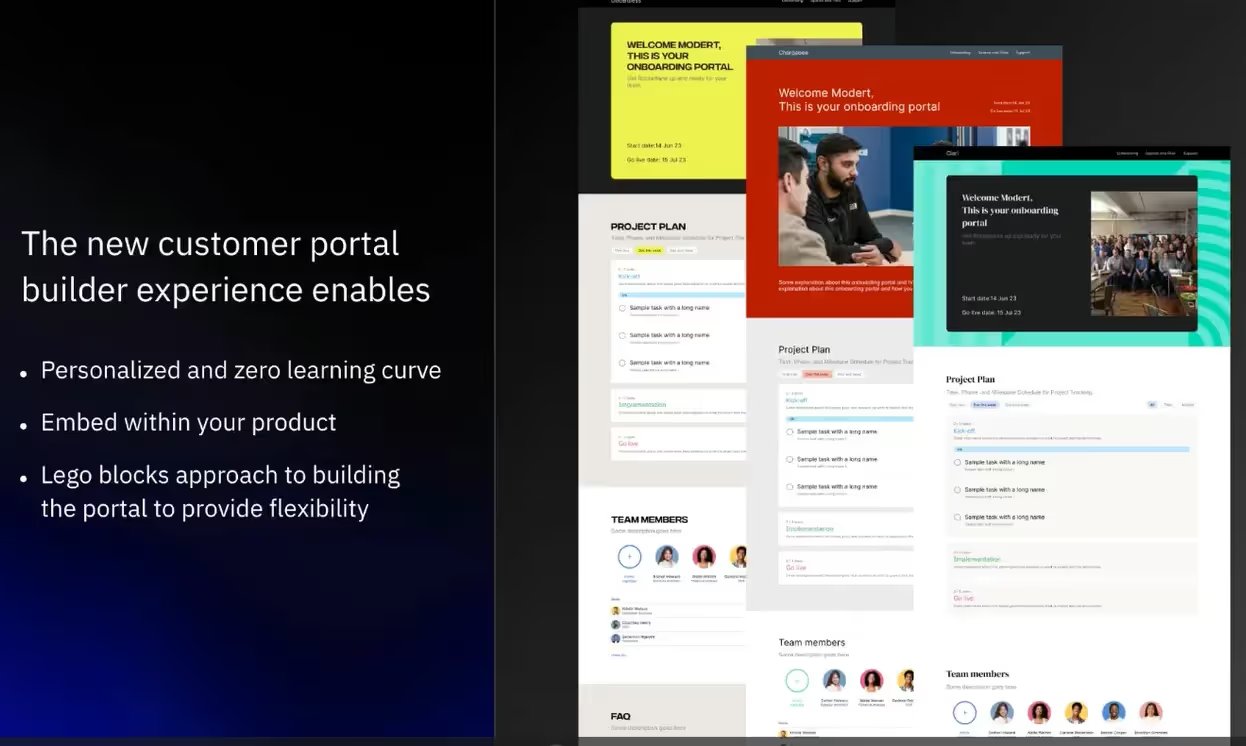
This allows key stakeholders to engage directly with the project, reducing the need for additional tools and minimizing the learning curve. Rocketlane also offers various communication options, such as email updates and chat, to accommodate different preferences.
9. Set up early warning systems
To effectively set up early warning systems, Rocketlane uses a CSAT survey at every significant milestone rather than just at the end of a project. This way, they can gauge customer satisfaction throughout the entire process.
With this approach, you can catch potential issues early. Plus, when customers provide positive feedback from the start, they’re more likely to cut you some slack if any bumps come up later, remembering the good experiences.

Rocketlane also helps you leverage automation to flag deviations in project progress. For instance, if a task takes longer than expected, it can be flagged in the tool.
While flagging too many minor issues can create noise in the project management process, focus on key events that truly matter, like integrations, migrations, user acceptance testing, user training, and go-live.
By concentrating on these critical moments, you can effectively manage risks and keep the project moving forward without overwhelming stakeholders with unnecessary details. This approach ensures that issues are addressed quickly, keeping everything on track.
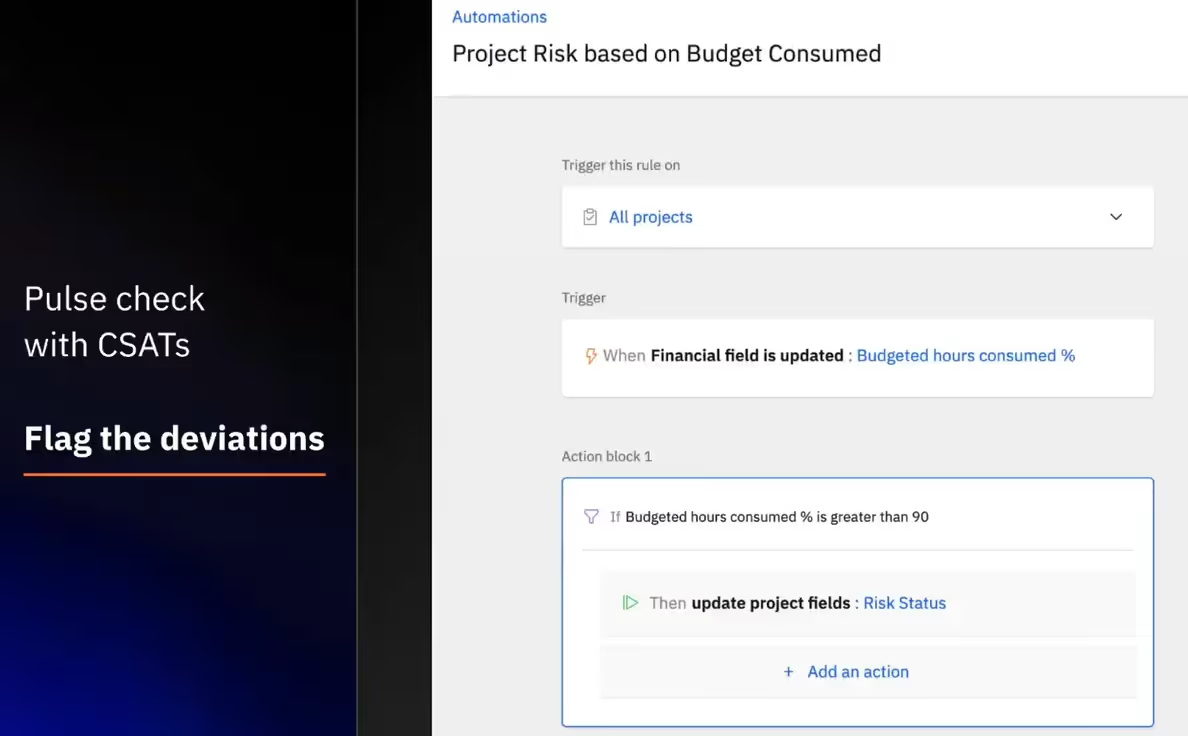
10. Fuel adoption with planned initiatives
To effectively fuel adoption, it’s crucial to get end users excited about using the product and ensure they continue to use it.
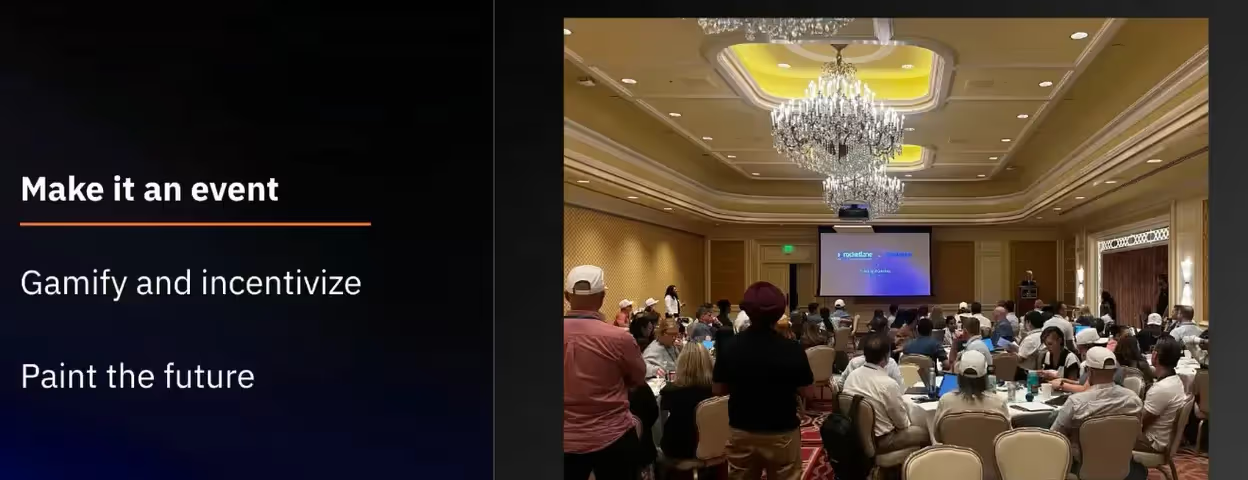
One successful approach is to make the go-live/rollout an event. For instance, one of Rocketlane’s customers held a launch event at their end to bring together product users to discuss its benefits and build excitement. They incorporated fun elements like giveaways and an engaging project name, creating enthusiasm before going live. In other cases, some customers decorated their offices and used digital signage to celebrate the go-live demonstrating their commitment to the partnership.
Another effective approach is to gamify the adoption process. You can introduce challenges and incentives, rewarding teams or individuals who maximize their use of the product.
Lastly, as the implementation phase concludes, it’s essential to communicate what happens next. This includes the hyper-care experience, where the team continues to support and engage the customer. It’s also important to paint a picture of ongoing collaboration, outlining how the CSMs will assist in achieving the customer’s objectives moving forward.
Bonus tip: Charge smaller customers a refundable implementation fee
A great way to get smaller customers engaged is by charging a refundable onboarding fee.
Here’s how it works: for customers spending just a few thousand dollars a year, Rocketlane charges a $500 onboarding fee. But here’s the catch: if they show up prepared for meetings, they get their $500 back. This creates a sense of commitment and ensures that instead of onboarding managers having to chase clients, customers arrive prepared and ready to engage right from the start.
Q&A with Brett Jarvis and Kasey Smith
1. How do you determine the first value for potential onboarding milestones?
Brett: We have certain things on our side that we know customers will typically want, and we suggest those. But we also ask the customers what they truly want. Why did they buy from us? What’s the business objective behind their decision? Often, customers focus on how they’ll use the product, but we dig deeper and ask, "Why do you want them to use it?" That helps us uncover their true goals, like driving time to value down to improve profitability, revenue, or throughput without needing to hire more people.
2. How do you prioritize which touchpoints to focus on during onboarding?
Kasey: The key is understanding what matters most to the customer. That’s how we build our client journeys—around their most important needs while focusing on what will get us to the result as quickly and smoothly as possible. We concentrate on the touch points that will get them where they need to be fast.
3. Any tips on consulting with customers to identify value pointers?
Brett: Ask "why" multiple times, to dig through to the answer. When you first ask about their objectives, they might focus on the tool. But ask why they want that result, why it matters. Keep probing until you get to their true business goals. If needed, offer examples of what other customers get out of the product.
You can also ask, "Six months from now, what results will your leaders expect? What will make them happy, promote you, or earn you kudos?" Or, "What do we need to do for you to stay with us long-term?" These kinds of questions help identify key objectives.
4. What strategies do you recommend for managing client dissatisfaction?
Kasey: First, take client dissatisfaction head-on. Don’t assume we’re entirely at fault, though we sometimes are. Meet with the person expressing concern and dive deep into what really happened. Often, dissatisfaction stems from a mix of the customer, the tool, or our team. Sometimes it’s an internal issue on their side, like organizational problems or a technical glitch.
Don’t avoid tough conversations. Once you meet with the person, things usually aren’t as bad as they seem. Ignoring it, though, can make things ugly fast. People are often reasonable if you simply jump on a call, turn your camera on, and talk things through. Many times, you’ll find out it’s not entirely your fault.
5. What practical ways can you use to measure and improve client satisfaction across all touchpoints?
Brett: We ask for customer satisfaction (CSAT) at key milestones during implementation and with support tickets. NPS is typically gathered every six months or so. It’s important to ask follow-up and open-ended questions to get more detailed feedback. You also need to tie these surveys to the outcomes and objectives you’re aiming for.
6. What does hypercare look like, and how is the CSM involved?
Brett: During hypercare, the implementation manager who has been with the customer from the start stays engaged while they begin using the product. It's not just about going live and then handing things off. The implementation manager handles any initial issues, like bugs or process changes, that users struggle with. At the same time, the CSM gets involved once the customer goes live, focusing on the business side of things. The implementation manager sticks to the technical aspects, while the CSM ensures the business goals are met.
{{demo}}


.avif)



















.webp)